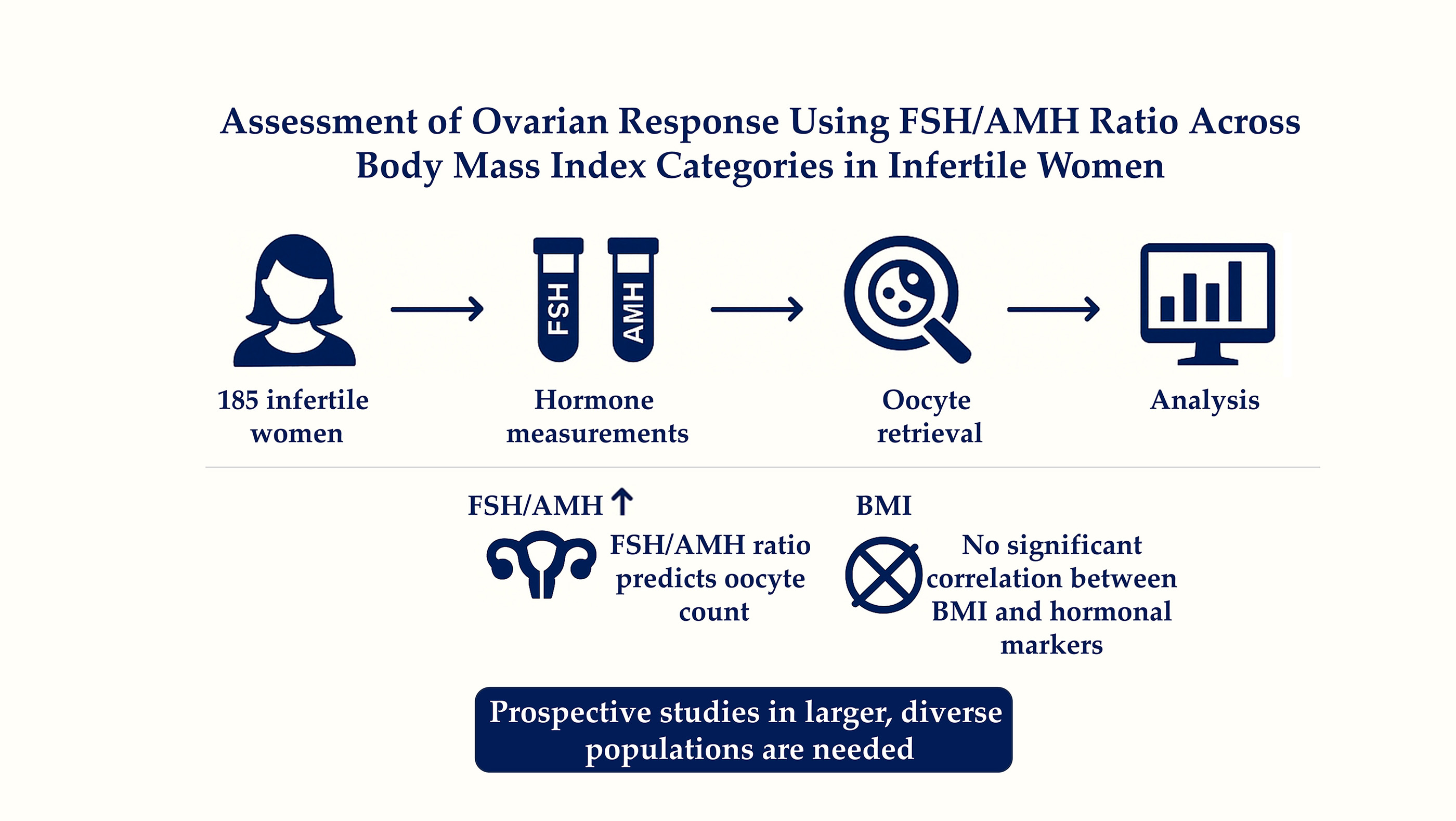- Academic Editor
-
-
-
Obesity significantly influences female reproductive health; however, its specific impact on hormonal predictors of ovarian response remains uncertain. The follicle-stimulating hormone (FSH)/ anti-Mullerian hormone (AMH) ratio has recently gained attention as a potential marker of ovarian reserve and response to controlled ovarian stimulation. This study aimed to assess the association between the FSH/AMH ratio and oocyte count and to determine whether body mass index (BMI) modifies this relationship.
In this retrospective study, 185 women undergoing ovarian stimulation were reviewed, and 92 met predefined clinical and hormonal inclusion criteria. Baseline FSH, luteinizing hormone (LH), AMH, BMI, and oocyte counts were recorded, and the FSH/AMH ratio was calculated. Associations were assessed using Spearman correlation, Kruskal-Wallis tests, and linear regression analysis.
AMH levels showed a strong positive correlation with oocyte count, while the FSH/AMH ratio demonstrated a strong negative correlation. FSH exhibited a weak negative correlation, and no significant association was observed between BMI and hormonal markers. Neither oocyte count nor the FSH/AMH ratio differed significantly across BMI categories. Linear regression analysis confirmed that the FSH/AMH ratio was an independent predictor of oocyte yield (p < 0.001), whereas BMI and its interaction with the ratio were not statistically significant.
The FSH/AMH ratio is a reliable and BMI-independent predictor of ovarian response. These findings support its clinical utility in fertility assessment and treatment planning, particularly when standard markers are inconclusive.



